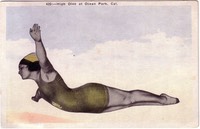Steve Chawkins John Nash, 1928—2015 A Beautiful mind subject won a Nobel, Los Angeles Times, May 25, 2015, Al, A12, 2 pp.
The barefoot man in mismatched plaids roamed for years through Princeton University’s math building, muttering to himself. In empty classrooms, The Phantom of Fine Hall, as he was known, scribbled mysterious equations and strange revelations.
He was a solitary figure, tormented by paranoia and subject to strange delusions. He once declined an appointment to the faculty at the University of Chicago, saying he was about to be named Emperor of Antarctica.
[Picture in academic gear of J.F. Nash AAron Tam, AFP/Getty Images]
But John Forbes Nash Jr. was also a genius, a Nobel Prize winner who transformed economics and was known as one of the greatest mathematicians of his time.
The inspiration for Ron Howard’s 2001 Oscar-winning film A Beautiful Mind, He eventually recovered from his devastating illness, defying a common misconception about schizophrenia.
Nash, 86, and his wife Alicia, 82, died Saturday in a traffic accident on the New Jersey turnpike. The taxi is which they were passengers hit a guardrail near Monroe Township, a [See Nash, A12] [A12]
[Picture of J.F. and Alicia Nash from 2002, Frank Jacob III AP]
[Nash from A1] spokesman for the New Jersey State Police said.
Although Nash was famous among mathematicians for sophisticated solutions to a variety of problems involving algebraic geometry and partial differential equations he was more widely known for his work in economics.
His 1994 Nobel Prize in economics was for his contributions to game theory, a discipline that has become fundamental to the study of the field and a crucial aid in high-stake contests such as arms talks, trade negotiations and elections.
It was a concept he laid out in his doctoral thesis when he was just 21. [Year, l949]
His paper was only 27 pages—“and very generously double-spaced,” his friend and Princeton colleague Harold W. Kuhn joked to a Nobel seminar in 1994.
But the implications of what came to be called “”the Nash equilibrium” were huge.
Game theory had emerged in the 1940s as the creation of mathematician John von Neumannn and economist Oskar Morgenstern. The two delved into “zero sum” games—the kind with a winner who takes all and a loser who gets nothing.
With mathematical elegance, Nash analyzed more complex rivalries and found ways to compute a sweet spot—Nash equilibrium—where each party gets the best deal possible under the circumstances. Unions and management would apply it in complicated contract decisions; nuclear superpowers would use it in raising the specter of “mutually assured destruction” to keep a tenuous peace.
“”Nash’s insight into the dynamics of human rivalry—his theory of rational conflict and cooperation—was to become one of the most influential ideas of the twentieth century,” biographer Sylvia Nasar wrote in her 1999 book A Beautiful Mind.
Nash transformed economics, Nasar wrote, just as “Mendel’s ideas of genetic transmission, Darwin’s model of natural selection, and Newton’s celestial mechanics reshaped biology in their day.”
Before writing his groundbreaking thesis, Nash had taken only only one class in economics.
Born June 13, 1928, in Bluefield, W.Va., Nash was the son of John, an engineer, and Virginia, a former teacher. When he was in fourth grade, his parents were told their son had no ability in math. It seemed he would always get the right answers, but approached the problems in off-the-wall ways that weren’t in the textbook.
Nash entered the Carnegie Institute of Technology in Pittsburgh on a full scholarship. In three years, he graduated with bachelor’s and master’s degrees in mathematics as well as a one-line reference that eased the way into one of of the world’s most esteemed doctorate programs for mathematicians: “This man is a genius.”
At Princeton, Nash seldom attended class, annoyed other students by incessently whistling Bach fugues and spent hours bicycling figure eights on the univeristy’s quadrangle. He quickly developed a reputation for arrogance. After just a few weeks on campus, he managed to make an appointment with Princeton’s most famous professor, Albert Einstein.
It was a measure of Nash’s bravura and the power of his fantasy that he was not content merely to see Einstein but soon requested an audience with him,” Nasar wrote.
In Einstein’s study, Nash related some of his ideas on gravity, friction and radiation. After an hour, Einstein told him, “You had better study some more physics, young man.”
Nash’s chutzpah, while off-putting to some, did not hurt him professionally. At 22, [1950] he received his doctorate from Princeton. Meanwhile, he worked summers as a consultant at the Rand Corp. in Santa Monica, where game theory was being used to craft military strategies.
Nash was made a full-time instructor at MIT in 1953. While at Rand the folllowing summer, [1954], he was arrested for indecent exposure in a men’s restroom at the beach in Santa Monica. His security clearance was revoked, but no charges were filed.
When Nash was 30, [1958] Fortune magazine singled out the MIT wunderkind as one of America’s most brilliant mathematicians. In 1957, he maried Alicia Larde, a physics student from El Salvedor, and the two had a son in 1959. [John Charles Nash][They also had a son from a previous relationship [John David Steir].
. . .
In the 1980s, Nash’s illnesses started to recede. He started to have meaningful conversations with scholars. A movement to nominate his work on game theory for the Nobel took hold . . . which Nash received with John C. Harsanyi, of UC Berkeley and German Reinhard Selten for their work in game theory.
. . .
In March won the 2015 Abel Prize from the Norwegian Academy of Arts and Sciences for some of the mathematical breakthroughs [other] than game theory. They were returning from this award ceremony when they were killed on this NJ taxi ride
Alicia and John Nash remarried in 2001…
